Session 54
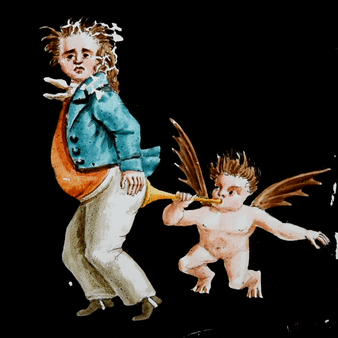
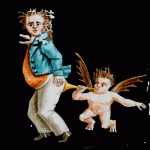
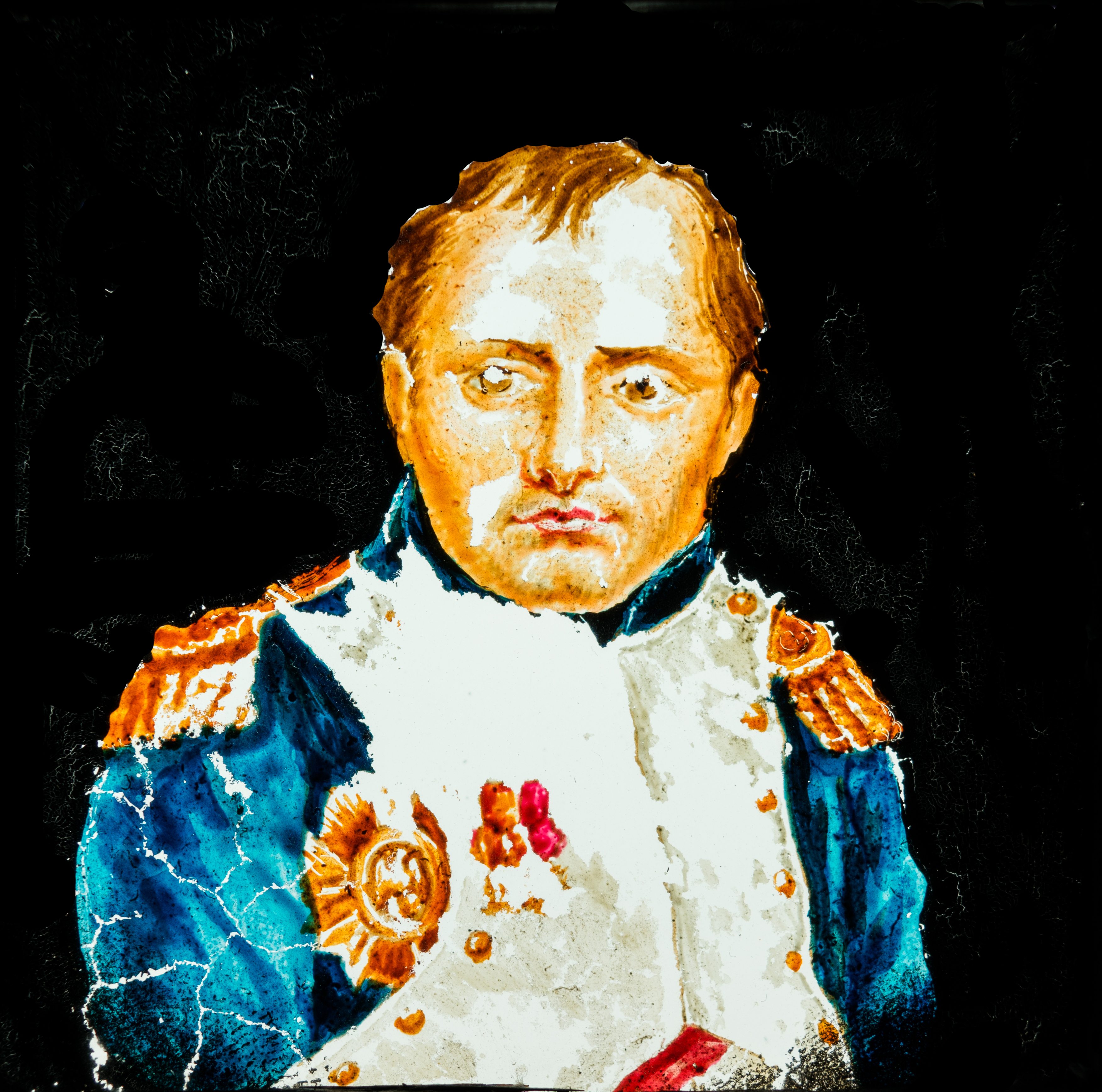
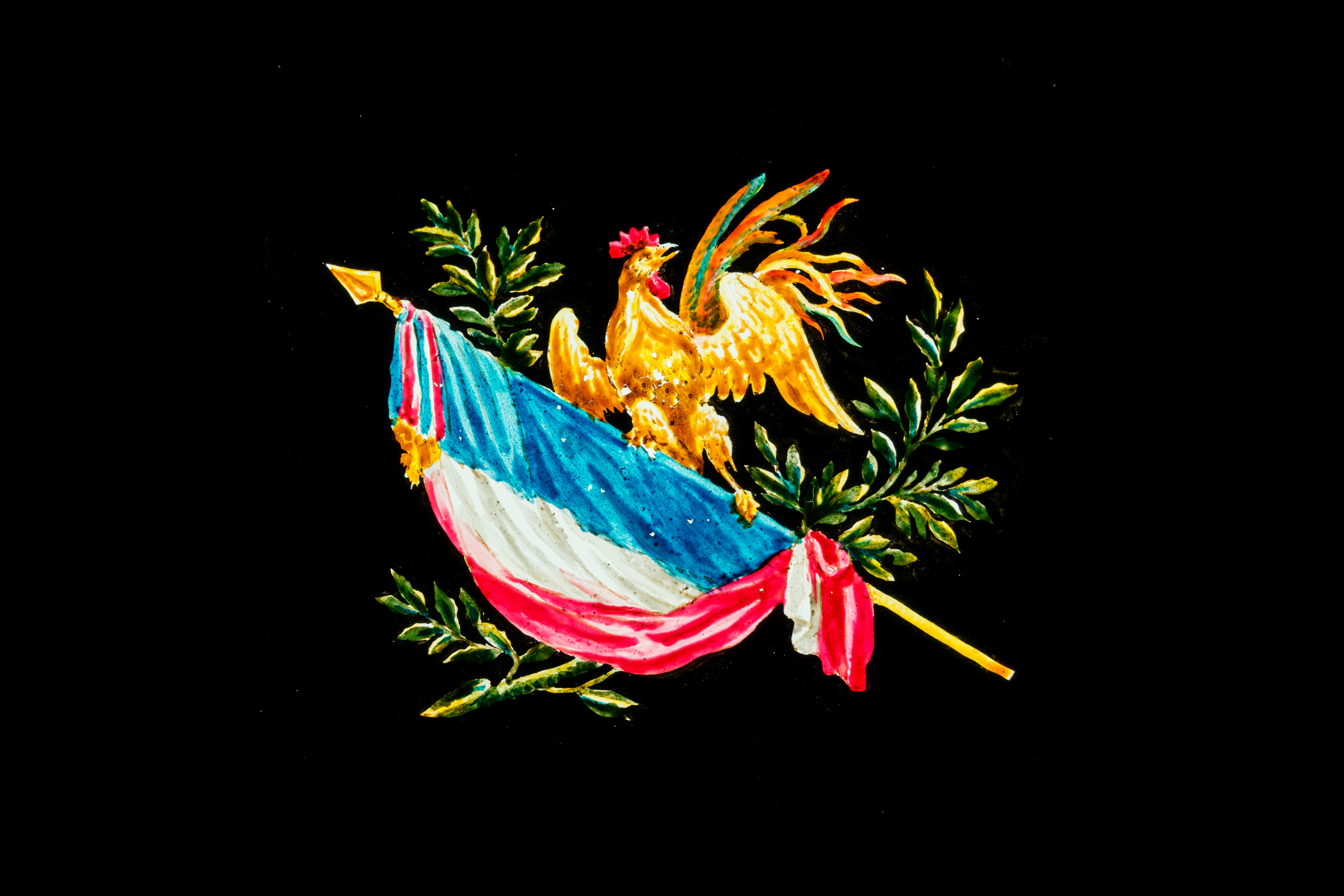
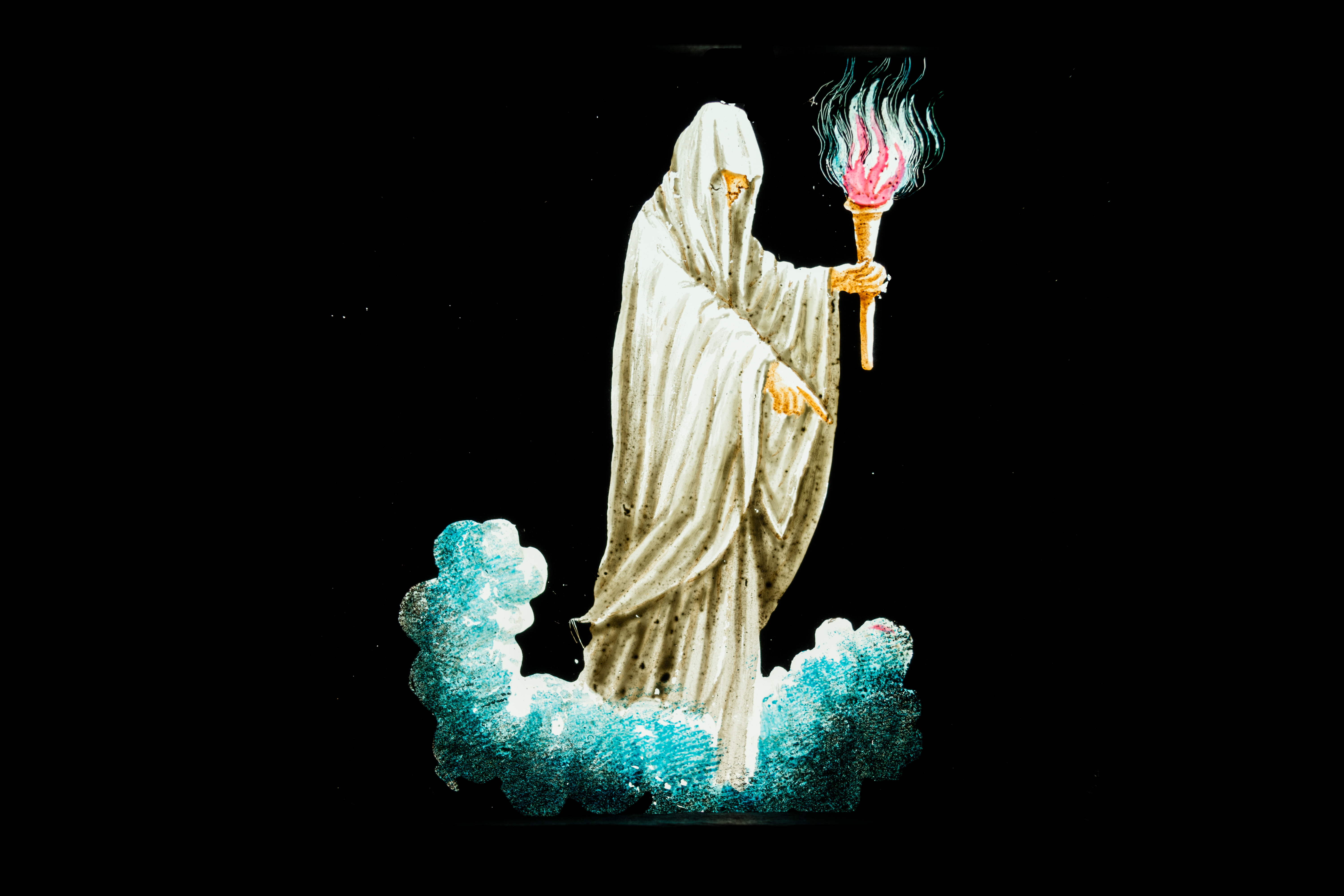
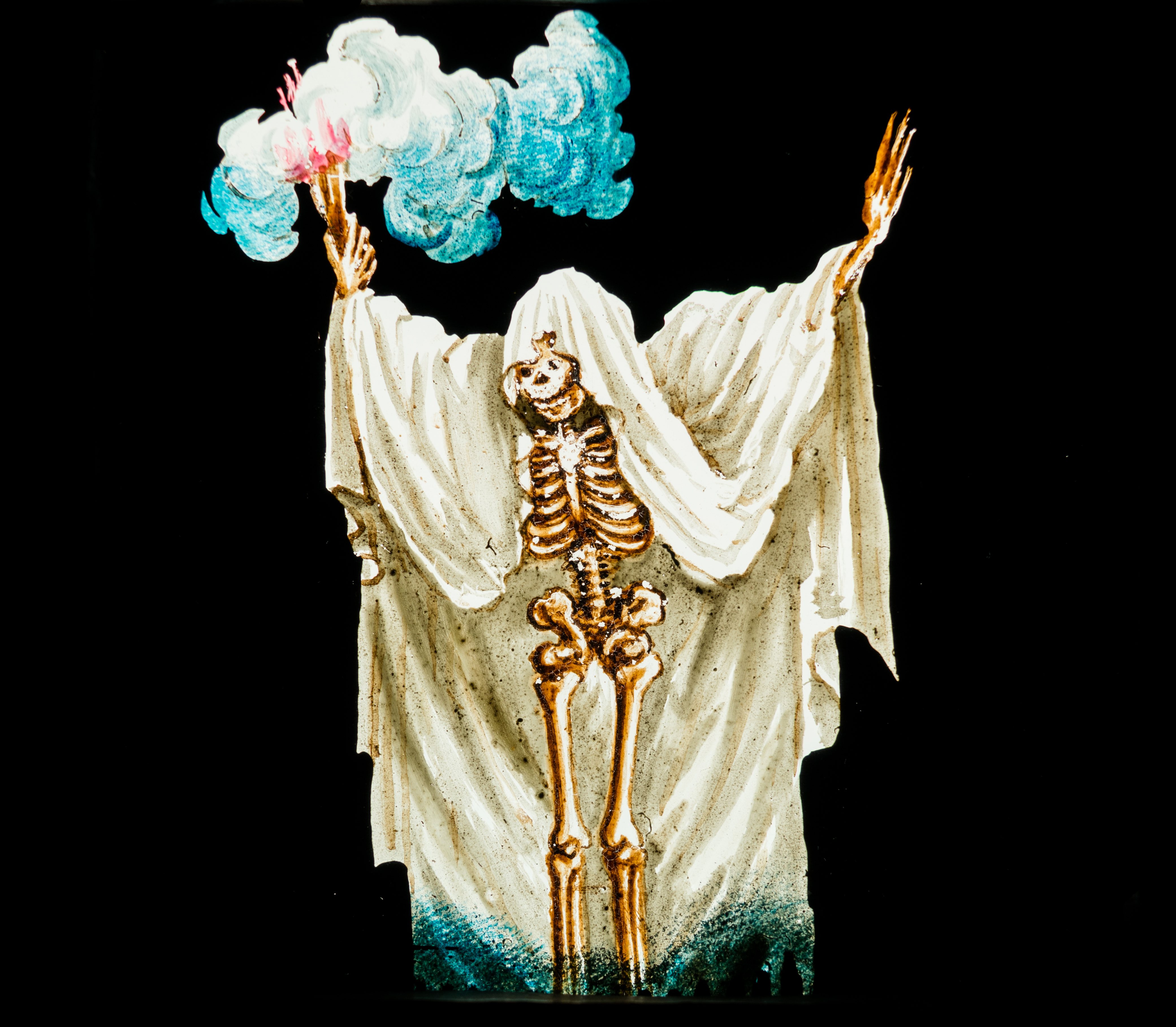
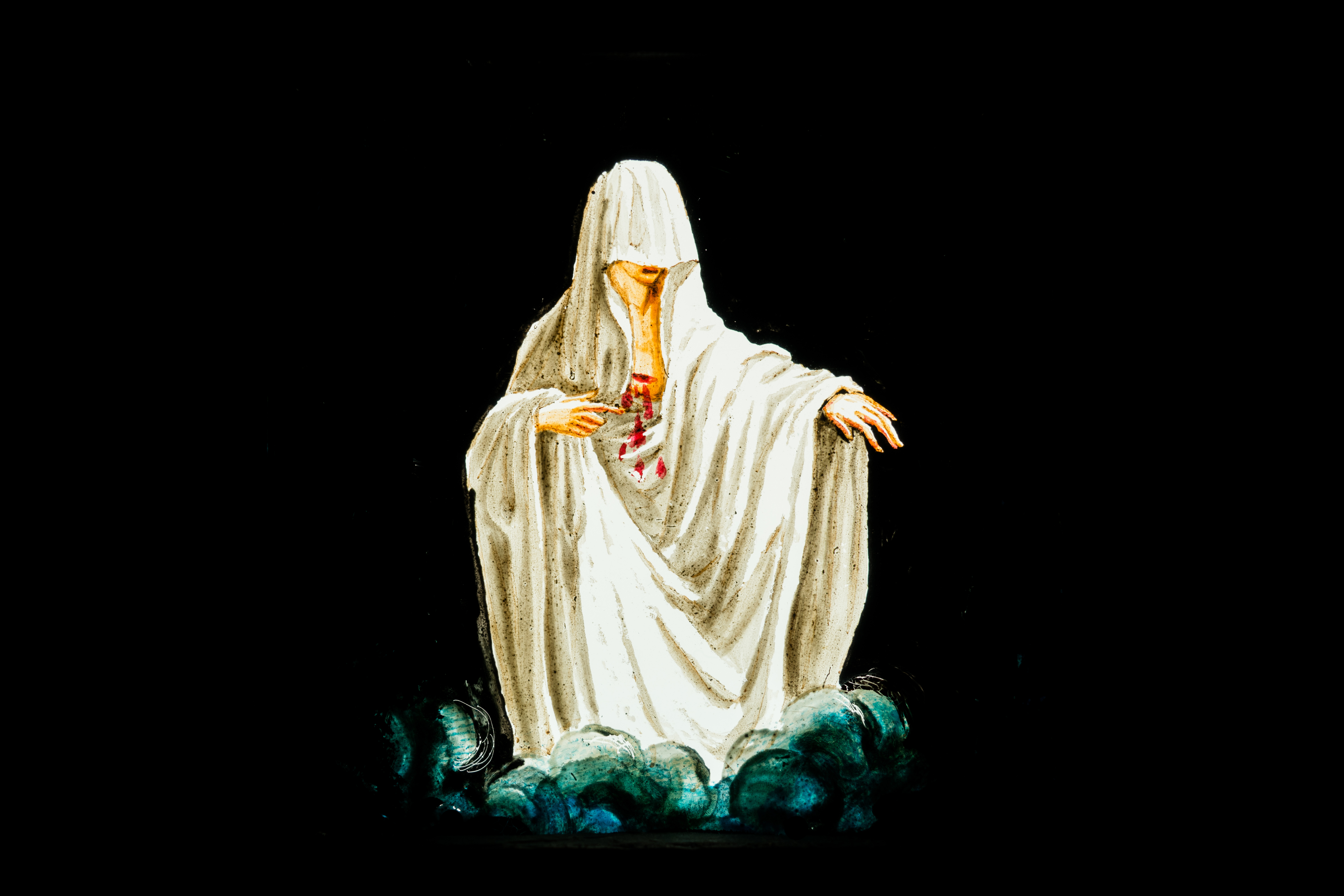
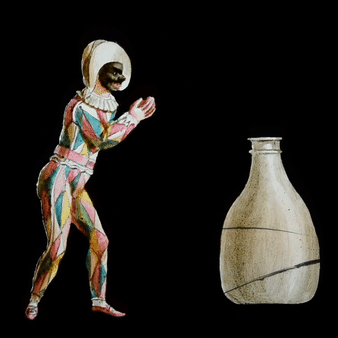
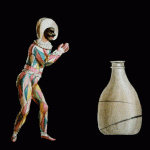
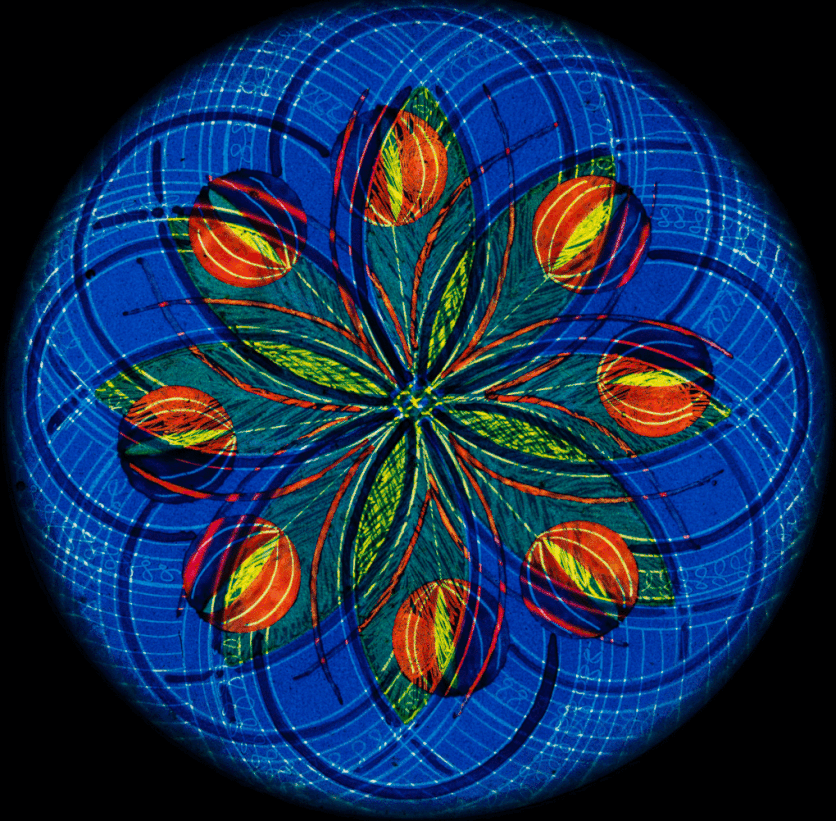
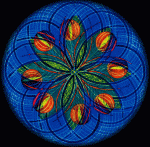
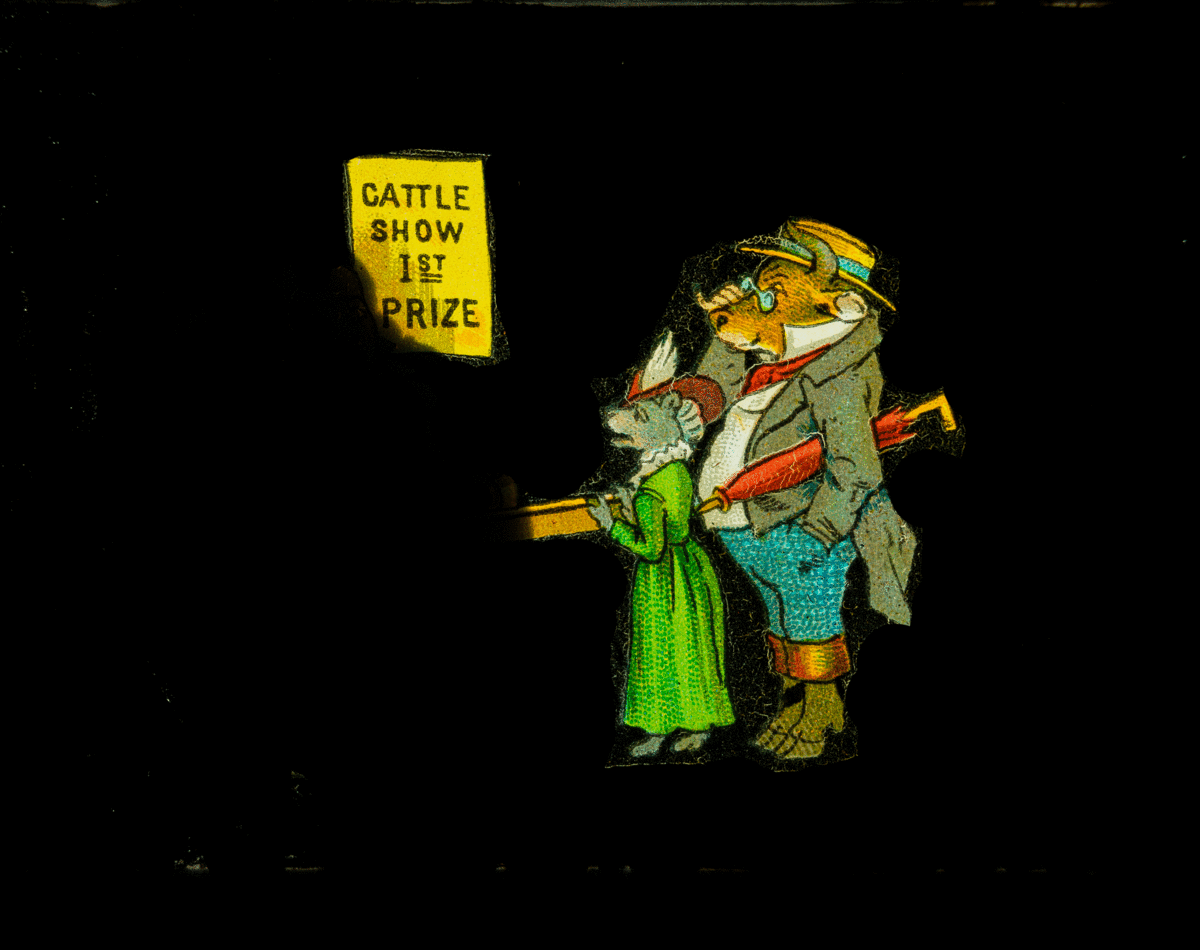
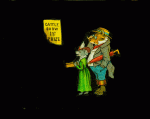
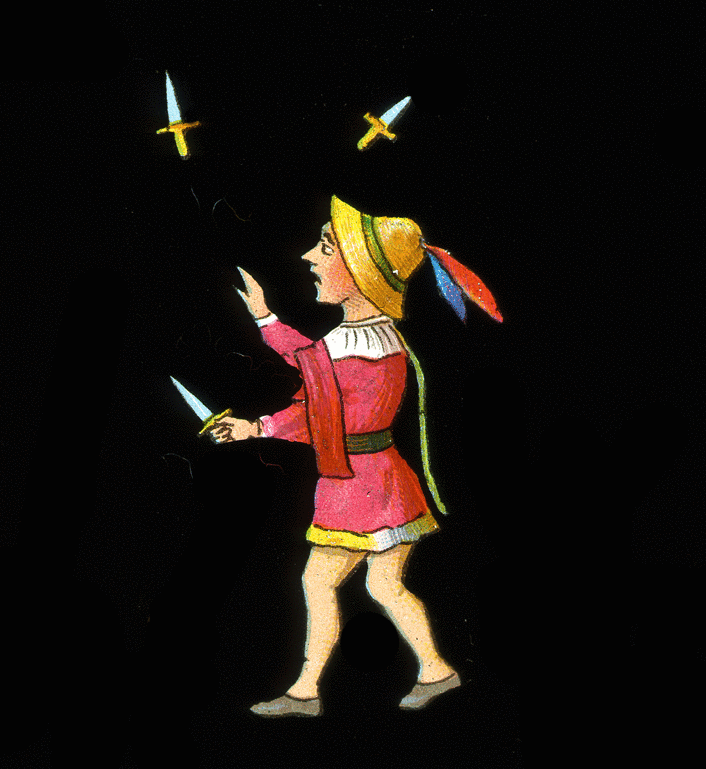
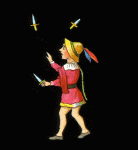
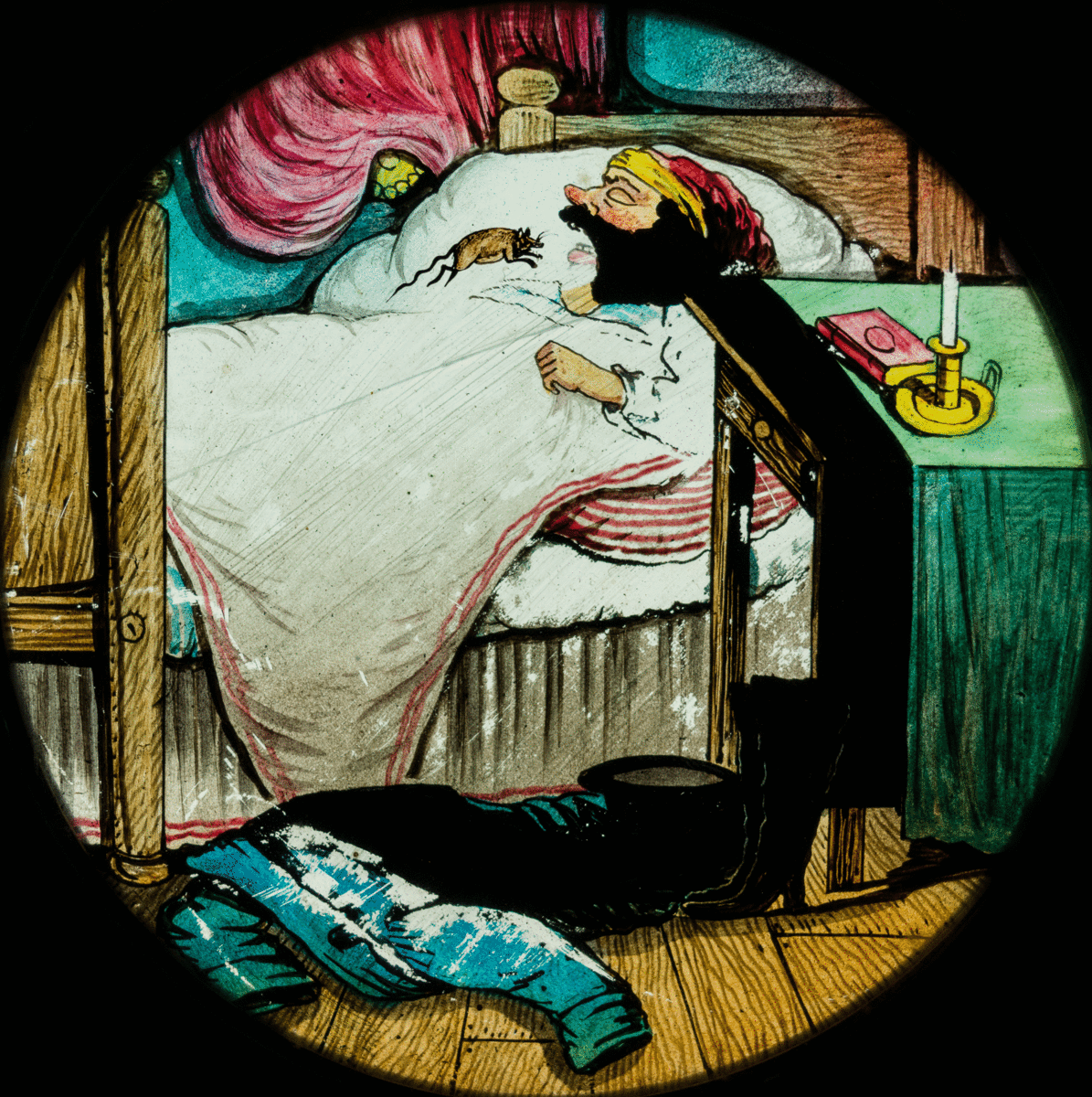
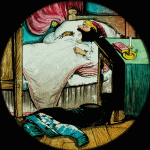
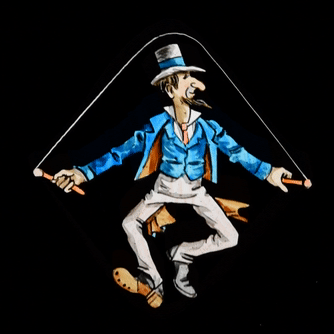
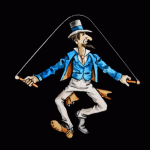

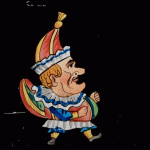
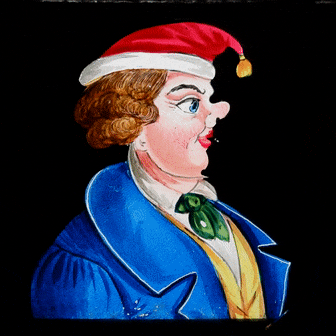
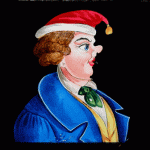
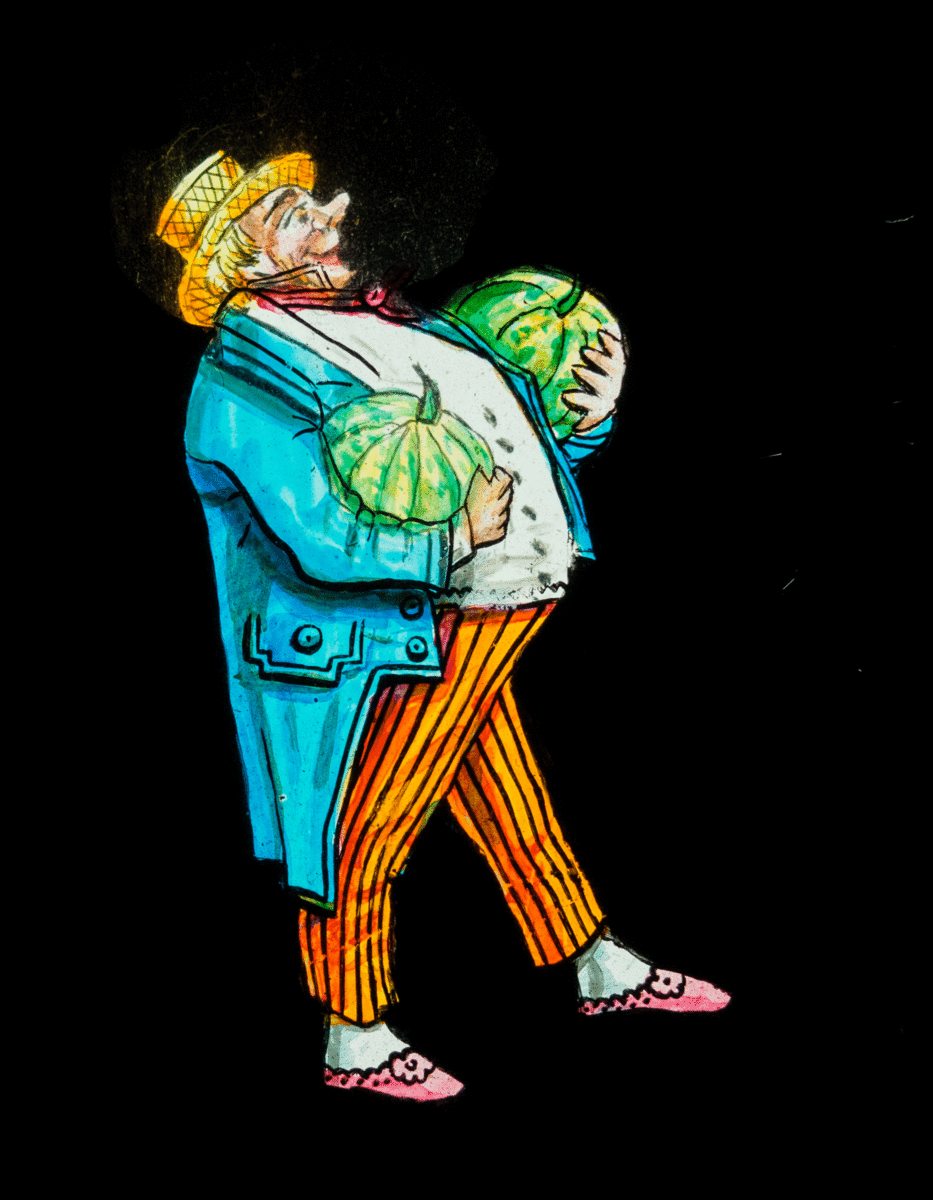
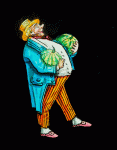
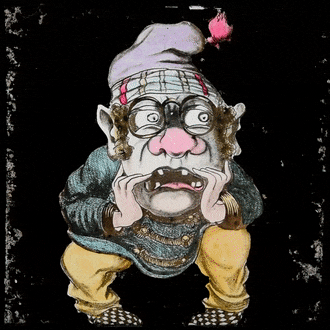
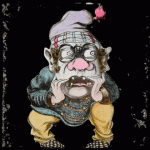
- El ventre inflat pel diable
- Napoléon
- Le Drapeau et le Coq
- Fantome avec sa torche en profil
- Squelette dans son linceuil
- Fantome dans son linceuil en face
- Arlequin dans la bouteille
- Chromatrope
- Visit to the Castle
- El malabarista
- Man Sleeping and Swallowing a Rat
- Man Skipping Rope
- Man Who Grows his Nose
- Man Farts
- Man with pumpkins
- Ogre that Moves His Eyes
El ventre inflat pel diable
- Registration number 02640-16
- Collection title Phantasmagoria
- Collection's origin Museu del Cinema Co.lecció Tomàs Mallol
- Country of origin France
- Manufatured by Anonymous
- Year 1850
- Dimensions 13,5 x 20,8 x 1,1 cm
- Genre Phantasmagoria
Theme
Phantasmagoria
Description
Phantasmagoria magic lantern slides evoke the mysterious atmosphere of Gothic novels so popular in the late eighteenth century: ruins covered bathed in moonlighting, flying bats over crossing cemeteries, or cloisters where novices search for a missing lover. The thematic universe of these slides sessions includes of dark woods and landscapes, medieval ruins and castles with their own basements, crypts and passageways filled with ghosts, night noises, chains, skeletons, demons, even hybrid and monstrous creatures that mingled with mythology, such as the head of Medusa or the winged gryphon. The human being, except when referrering to great personalities famous people, is usually represented by men who are monks or hermits; and women are generally virgins, novices, nuns, witches or fortune tellers. These motifs remained popular for many years in the taste of the audience, which as was evidenced by the systematic inclusion of phantasmagorias in the magic lantern soirées throughout the nineteenth century.
Napoléon
- Registration number 02640-02
- Collection title unavailable
- Collection's origin Museu del Cinema Co.lecció Tomàs Mallol
- Country of origin France
- Manufatured by Anonymous
- Year 1850
- Dimensions 13,5 x 19,5 x 1,1 cm
- Genre Phantasmagoria
Theme
Phantasmagoria
Description
Phantasmagoria magic lantern slides evoke the mysterious atmosphere of Gothic novels so popular in the late eighteenth century: ruins covered bathed in moonlighting, flying bats over crossing cemeteries, or cloisters where novices search for a missing lover. The thematic universe of these slides sessions includes of dark woods and landscapes, medieval ruins and castles with their own basements, crypts and passageways filled with ghosts, night noises, chains, skeletons, demons, even hybrid and monstrous creatures that mingled with mythology, such as the head of Medusa or the winged gryphon. The human being, except when referrering to great personalities famous people, is usually represented by men who are monks or hermits; and women are generally virgins, novices, nuns, witches or fortune tellers. These motifs remained popular for many years in the taste of the audience, which as was evidenced by the systematic inclusion of phantasmagorias in the magic lantern soirées throughout the nineteenth century.
Le Drapeau et le Coq
- Registration number 02640-03
- Collection title unavailable
- Collection's origin Museu del Cinema Co.lecció Tomàs Mallol
- Country of origin France
- Manufatured by Anonymous
- Year 1850
- Dimensions 13,4 x 19,4 x 1,1 cm
- Genre Phantasmagoria
Theme
Phantasmagoria
Description
Phantasmagoria magic lantern slides evoke the mysterious atmosphere of Gothic novels so popular in the late eighteenth century: ruins covered bathed in moonlighting, flying bats over crossing cemeteries, or cloisters where novices search for a missing lover. The thematic universe of these slides sessions includes of dark woods and landscapes, medieval ruins and castles with their own basements, crypts and passageways filled with ghosts, night noises, chains, skeletons, demons, even hybrid and monstrous creatures that mingled with mythology, such as the head of Medusa or the winged gryphon. The human being, except when referrering to great personalities famous people, is usually represented by men who are monks or hermits; and women are generally virgins, novices, nuns, witches or fortune tellers. These motifs remained popular for many years in the taste of the audience, which as was evidenced by the systematic inclusion of phantasmagorias in the magic lantern soirées throughout the nineteenth century.
Fantome avec sa torche en profil
- Registration number 02640-04
- Collection title unavailable
- Collection's origin Museu del Cinema Co.lecció Tomàs Mallol
- Country of origin France
- Manufatured by Anonymous
- Year 1850
- Dimensions 13,4 x 19,1 x 1,1 cm
- Genre Phantasmagoria
Theme
Phantasmagoria
Description
Phantasmagoria magic lantern slides evoke the mysterious atmosphere of Gothic novels so popular in the late eighteenth century: ruins covered bathed in moonlighting, flying bats over crossing cemeteries, or cloisters where novices search for a missing lover. The thematic universe of these slides sessions includes of dark woods and landscapes, medieval ruins and castles with their own basements, crypts and passageways filled with ghosts, night noises, chains, skeletons, demons, even hybrid and monstrous creatures that mingled with mythology, such as the head of Medusa or the winged gryphon. The human being, except when referrering to great personalities famous people, is usually represented by men who are monks or hermits; and women are generally virgins, novices, nuns, witches or fortune tellers. These motifs remained popular for many years in the taste of the audience, which as was evidenced by the systematic inclusion of phantasmagorias in the magic lantern soirées throughout the nineteenth century.
Squelette dans son linceuil
- Registration number 02640-01
- Collection title unavailable
- Collection's origin Museu del Cinema Co.lecció Tomàs Mallol
- Country of origin France
- Manufatured by Anonymous
- Year 1850
- Dimensions 13,6 x 19,3 x 1,1 cm
- Genre Phantasmagoria
Theme
Phantasmagoria
Description
Phantasmagoria magic lantern slides evoke the mysterious atmosphere of Gothic novels so popular in the late eighteenth century: ruins covered bathed in moonlighting, flying bats over crossing cemeteries, or cloisters where novices search for a missing lover. The thematic universe of these slides sessions includes of dark woods and landscapes, medieval ruins and castles with their own basements, crypts and passageways filled with ghosts, night noises, chains, skeletons, demons, even hybrid and monstrous creatures that mingled with mythology, such as the head of Medusa or the winged gryphon. The human being, except when referrering to great personalities famous people, is usually represented by men who are monks or hermits; and women are generally virgins, novices, nuns, witches or fortune tellers. These motifs remained popular for many years in the taste of the audience, which as was evidenced by the systematic inclusion of phantasmagorias in the magic lantern soirées throughout the nineteenth century.
Fantome dans son linceuil en face
- Registration number 02640-09
- Collection title unavailable
- Collection's origin Museu del Cinema Co.lecció Tomàs Mallol
- Country of origin France
- Manufatured by Anonymous
- Year 1850
- Dimensions 13,5 x 19,3 x 1 cm
- Genre Phantasmagoria
Theme
Phantasmagoria
Description
Phantasmagoria magic lantern slides evoke the mysterious atmosphere of Gothic novels so popular in the late eighteenth century: ruins covered bathed in moonlighting, flying bats over crossing cemeteries, or cloisters where novices search for a missing lover. The thematic universe of these slides sessions includes of dark woods and landscapes, medieval ruins and castles with their own basements, crypts and passageways filled with ghosts, night noises, chains, skeletons, demons, even hybrid and monstrous creatures that mingled with mythology, such as the head of Medusa or the winged gryphon. The human being, except when referrering to great personalities famous people, is usually represented by men who are monks or hermits; and women are generally virgins, novices, nuns, witches or fortune tellers. These motifs remained popular for many years in the taste of the audience, which as was evidenced by the systematic inclusion of phantasmagorias in the magic lantern soirées throughout the nineteenth century.
Arlequin dans la bouteille
- Registration number 02640-19
- Collection title Phantasmagoria
- Collection's origin Museu del Cinema Co.lecció Tomàs Mallol
- Country of origin France
- Manufatured by Anonymous
- Year 1850
- Dimensions 13,1 x 24,9 x 1 cm
- Genre Phantasmagoria
Theme
Phantasmagoria
Description
Phantasmagoria magic lantern slides evoke the mysterious atmosphere of Gothic novels so popular in the late eighteenth century: ruins covered bathed in moonlighting, flying bats over crossing cemeteries, or cloisters where novices search for a missing lover. The thematic universe of these slides sessions includes of dark woods and landscapes, medieval ruins and castles with their own basements, crypts and passageways filled with ghosts, night noises, chains, skeletons, demons, even hybrid and monstrous creatures that mingled with mythology, such as the head of Medusa or the winged gryphon. The human being, except when referrering to great personalities famous people, is usually represented by men who are monks or hermits; and women are generally virgins, novices, nuns, witches or fortune tellers. These motifs remained popular for many years in the taste of the audience, which as was evidenced by the systematic inclusion of phantasmagorias in the magic lantern soirées throughout the nineteenth century.
Chromatrope
- Registration number 02489
- Collection title Chromatrope
- Collection's origin Museu del Cinema Co.lecció Tomàs Mallol
- Country of origin unavailable
- Manufatured by Without Accurate Information
- Year 1890
- Dimensions 11 x 19,1 x 1,3 cm
- Genre Title
Theme
Title
Description
Title genre magic lantern slides include visual contents such as signs, inscriptions or decorative elements that served to lead, announce transitions, or finish any of the projected stories during the magic lantern shows. Magic lantern slides within the title genre genre include the chromotoscopic subgenre. Chromotoscopic magic lantern slides are defined as having two specific properties in addition to the sign genre: a cyclical format and the creation of their images by pictorial and / or printing techniques.
Visit to the Castle
- Registration number 02537
- Collection title Visit to the Castle
- Collection's origin Museu del Cinema Co.lecció Tomàs Mallol
- Country of origin England
- Manufatured by Walls, T. J.
- Year 1880
- Dimensions 10,1 x 17,8 x 1 cm
- Genre Burlesque
Theme
Burlesque
Description
Magic lantern slides classified within the burlesque genre are defined as having three specific properties, in addition to the scenic generic properties: (1) The recording and level of codification of their images through pictorial and / or printing techniques; (2) a medium complexity in staging —slides were designed to be shown with some kind of funny comment and / or some form of musical accompaniment—; and (3) the use of cultural contents from certain minor dramatic traditions — dances, musical numbers, illusionism, declamation, imitation, humor, pantomime, shadows and silhouettes, or circus arts —including acrobatics, juggling or samples of biological rarities or trained animals.
Among burlesque magic lantern slides, those that refer to actions that seek to ridicule someone or something are very frequent. In human interaction, the slides present their subjects in two ways, either in fun or harmfull: they use parody and exaggeration of the features and actions of a character in order to ridicule a topic, either glorifying the socially unacceptable, or denigrating the socially dignified. These slides are connected to variety shows and directly related to the tradition of the American vaudeville, the French cabaret, or the British pantomime and music hall.
El malabarista
- Registration number CE1986/006/3071
- Collection title El malabarista
- Collection's origin MUNCYT
- Country of origin Anonymous
- Manufatured by Anonymous
- Year c. 1880
- Dimensions 19,2 x 10 x 1 cm
- Genre Burlesque
Theme
Burlesque
Description
Magic lantern slides classified within the burlesque genre are defined as having three specific properties, in addition to the scenic generic properties: (1) The recording and level of codification of their images through pictorial and / or printing techniques; (2) a medium complexity in staging —slides were designed to be shown with some kind of funny comment and / or some form of musical accompaniment—; and (3) the use of cultural contents from certain minor dramatic traditions — dances, musical numbers, illusionism, declamation, imitation, humor, pantomime, shadows and silhouettes, or circus arts —including acrobatics, juggling or samples of biological rarities or trained animals.
Among burlesque magic lantern slides, those that refer to actions that seek to ridicule someone or something are very frequent. In human interaction, the slides present their subjects in two ways, either in fun or harmfull: they use parody and exaggeration of the features and actions of a character in order to ridicule a topic, either glorifying the socially unacceptable, or denigrating the socially dignified. These slides are connected to variety shows and directly related to the tradition of the American vaudeville, the French cabaret, or the British pantomime and music hall.
Man Sleeping and Swallowing a Rat
- Registration number 02470-01
- Collection title Man Sleeping and Swallowing a Rat
- Collection's origin Museu del Cinema Co.lecció Tomàs Mallol
- Country of origin unavailable
- Manufatured by Without Accurate Information
- Year 1890
- Dimensions 11,4 x 22,5 x 1,8 cm
- Genre Burlesque
Theme
Burlesque
Description
Magic lantern slides classified within the burlesque genre are defined as having three specific properties, in addition to the scenic generic properties: (1) The recording and level of codification of their images through pictorial and / or printing techniques; (2) a medium complexity in staging —slides were designed to be shown with some kind of funny comment and / or some form of musical accompaniment—; and (3) the use of cultural contents from certain minor dramatic traditions — dances, musical numbers, illusionism, declamation, imitation, humor, pantomime, shadows and silhouettes, or circus arts —including acrobatics, juggling or samples of biological rarities or trained animals.
Among burlesque magic lantern slides, those that refer to actions that seek to ridicule someone or something are very frequent. In human interaction, the slides present their subjects in two ways, either in fun or harmfull: they use parody and exaggeration of the features and actions of a character in order to ridicule a topic, either glorifying the socially unacceptable, or denigrating the socially dignified. These slides are connected to variety shows and directly related to the tradition of the American vaudeville, the French cabaret, or the British pantomime and music hall.
Man Skipping Rope
- Registration number 02532
- Collection title Man Skipping Rope
- Collection's origin Museu del Cinema Co.lecció Tomàs Mallol
- Country of origin unavailable
- Manufatured by Without Accurate Information
- Year 1880
- Dimensions 10,1 x 18 x 0,9 cm
- Genre Burlesque
Theme
Burlesque
Description
Magic lantern slides classified within the burlesque genre are defined as having three specific properties, in addition to the scenic generic properties: (1) The recording and level of codification of their images through pictorial and / or printing techniques; (2) a medium complexity in staging —slides were designed to be shown with some kind of funny comment and / or some form of musical accompaniment—; and (3) the use of cultural contents from certain minor dramatic traditions — dances, musical numbers, illusionism, declamation, imitation, humor, pantomime, shadows and silhouettes, or circus arts —including acrobatics, juggling or samples of biological rarities or trained animals.
Among burlesque magic lantern slides, those that refer to actions that seek to ridicule someone or something are very frequent. In human interaction, the slides present their subjects in two ways, either in fun or harmfull: they use parody and exaggeration of the features and actions of a character in order to ridicule a topic, either glorifying the socially unacceptable, or denigrating the socially dignified. These slides are connected to variety shows and directly related to the tradition of the American vaudeville, the French cabaret, or the British pantomime and music hall.
Man Who Grows his Nose
- Registration number 02543
- Collection title Man Who Grows his Nose
- Collection's origin Museu del Cinema Co.lecció Tomàs Mallol
- Country of origin unavailable
- Manufatured by Without Accurate Information
- Year 1880
- Dimensions 11 x 17,7 x 1 cm
- Genre Burlesque
Theme
Burlesque
Description
Magic lantern slides classified within the burlesque genre are defined as having three specific properties, in addition to the scenic generic properties: (1) The recording and level of codification of their images through pictorial and / or printing techniques; (2) a medium complexity in staging —slides were designed to be shown with some kind of funny comment and / or some form of musical accompaniment—; and (3) the use of cultural contents from certain minor dramatic traditions — dances, musical numbers, illusionism, declamation, imitation, humor, pantomime, shadows and silhouettes, or circus arts —including acrobatics, juggling or samples of biological rarities or trained animals.
Among burlesque magic lantern slides, those that refer to actions that seek to ridicule someone or something are very frequent. In human interaction, the slides present their subjects in two ways, either in fun or harmfull: they use parody and exaggeration of the features and actions of a character in order to ridicule a topic, either glorifying the socially unacceptable, or denigrating the socially dignified. These slides are connected to variety shows and directly related to the tradition of the American vaudeville, the French cabaret, or the British pantomime and music hall.
Man Farts
- Registration number 02552
- Collection title Man Farts
- Collection's origin Museu del Cinema Co.lecció Tomàs Mallol
- Country of origin unavailable
- Manufatured by No informat
- Year 1880
- Dimensions 10,1 x 17,7 x 1 cm
- Genre unavailable
Theme
Description
Man with pumpkins
- Registration number 02555
- Collection title Man with pumpkins
- Collection's origin Museu del Cinema Co.lecció Tomàs Mallol
- Country of origin unavailable
- Manufatured by Without Accurate Information
- Year 1860
- Dimensions 11 x 29 x 1,5 cm
- Genre Burlesque
Theme
Burlesque
Description
Magic lantern slides classified within the burlesque genre are defined as having three specific properties, in addition to the scenic generic properties: (1) The recording and level of codification of their images through pictorial and / or printing techniques; (2) a medium complexity in staging —slides were designed to be shown with some kind of funny comment and / or some form of musical accompaniment—; and (3) the use of cultural contents from certain minor dramatic traditions — dances, musical numbers, illusionism, declamation, imitation, humor, pantomime, shadows and silhouettes, or circus arts —including acrobatics, juggling or samples of biological rarities or trained animals.
Among burlesque magic lantern slides, those that refer to actions that seek to ridicule someone or something are very frequent. In human interaction, the slides present their subjects in two ways, either in fun or harmfull: they use parody and exaggeration of the features and actions of a character in order to ridicule a topic, either glorifying the socially unacceptable, or denigrating the socially dignified. These slides are connected to variety shows and directly related to the tradition of the American vaudeville, the French cabaret, or the British pantomime and music hall.
Ogre that Moves His Eyes
- Registration number 02559
- Collection title unavailable
- Collection's origin Museu del Cinema Co.lecció Tomàs Mallol
- Country of origin unavailable
- Manufatured by Without Accurate Information
- Year 1880
- Dimensions 10,7 x 24,5 x 1,3 cm
- Genre Burlesque
Theme
Burlesque
Description
Magic lantern slides classified within the burlesque genre are defined as having three specific properties, in addition to the scenic generic properties: (1) The recording and level of codification of their images through pictorial and / or printing techniques; (2) a medium complexity in staging —slides were designed to be shown with some kind of funny comment and / or some form of musical accompaniment—; and (3) the use of cultural contents from certain minor dramatic traditions — dances, musical numbers, illusionism, declamation, imitation, humor, pantomime, shadows and silhouettes, or circus arts —including acrobatics, juggling or samples of biological rarities or trained animals.
Among burlesque magic lantern slides, those that refer to actions that seek to ridicule someone or something are very frequent. In human interaction, the slides present their subjects in two ways, either in fun or harmfull: they use parody and exaggeration of the features and actions of a character in order to ridicule a topic, either glorifying the socially unacceptable, or denigrating the socially dignified. These slides are connected to variety shows and directly related to the tradition of the American vaudeville, the French cabaret, or the British pantomime and music hall.